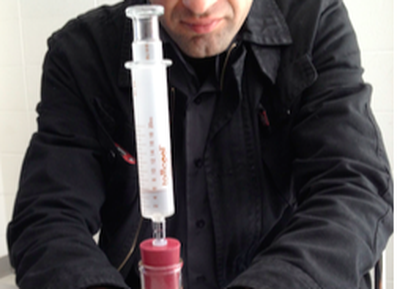
Overview
In this activity students brainstorm how compressible objects filled with air (such as air mattresses) are able to hold up the weight of a heavy object. Students then predict and observe the behavior of a plastic syringe. Using a basic syringe model in NetLogo students explore how the plunger level is related to air particle density on either side of the plunger. Students predict and explore the effects of pushing or pulling on the syringe plunger on the net forces acting on the syringe plunger. Students then design an experiment to test predictions about how particles in and outside of the syringe respond to these external forces. Finally, students using what they know about particle behavior, students explain how an inflatable air mattress can hold an individual and why the mattress returns to its original shape after the weight has been lifted. The teacher leads a consensus building discussion on particle interactions that account for these behaviors.
Underlying Pages
-
0. Student Directions -
Preview as Student
-
1. Brainstorm -
Preview as Student
-
2. Exploration 1 - Predict and Explore -
Preview as Student
-
3. Exploration 1 - Procedures -
Preview as Student
-
4. Exploration 1 - Follow Up -
Preview as Student
-
5. Exploration 2 - Predict -
Preview as Student
-
6. Exploration 2 - Procedure & Drawings -
Preview as Student
-
7. Exploration 3 - Predict -
Preview as Student
-
8. Exploration 3 - Procedure -
Preview as Student
-
9. Exploration 3 - Predict -
Preview as Student
-
10. Exploration 3 - Procedure -
Preview as Student
-
11. Exploration 3 - Follow Up -
Preview as Student
-
12. Follow Up -
Preview as Student
Standards
Computational Thinking in STEM
- Computational Problem Solving Practices
